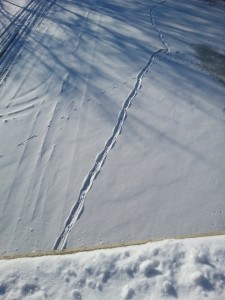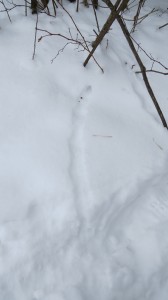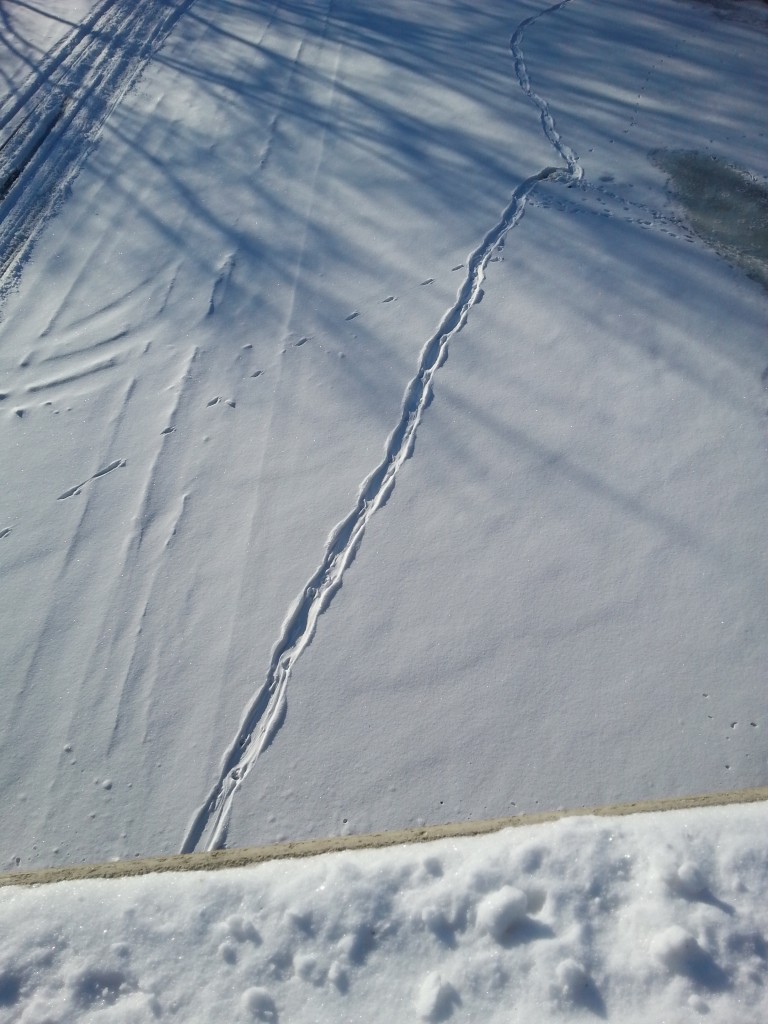 By Todd Von Ehwegen, Conservation Education Manager, Cerro Gordo County Conservation Board
By Todd Von Ehwegen, Conservation Education Manager, Cerro Gordo County Conservation Board
Short days, cold, wind, snow – winter can be a trying time for many of us. But instead of sitting inside “wishing away” winter, why not get out there and enjoy some of the fun activities the season?
Thus far the snowfall has been pretty marginal for activities such as skiing and snowmobiling, but it is nearly ideal for a lesser-known pastime – animal tracking.
The light blanket of winter snow has many fascinating stories to tell – you just have to know how to read them! It is not always easy and it takes some practice, but it is also very rewarding to unravel the mysteries of animal sign in the snow.
Bird watching is extremely popular for good reason – for the most part birds are very visible and can be seen during the day. Mammals are much less accessible – most are nocturnal and very secretive. Snow provides the perfect medium for these creatures to unknowingly leave behind tales of their activities.
Once you get out there and start looking, the myriad of tracks in the snow can be a little confusing at first. As with bird watching, the key is to learn the various characteristics and field marks of the sign you are reading. This allows one to narrow down the list of possible animals, making the task of identification much less daunting.
Start with the foot of the animal. How many toes? Are there toenail marks? What size are they?
The gait, or manner of walking, is also definitive. What is the pattern? Are the footprints across from each other or alternating?
Let’s look at some general characteristics that can be used to narrow down where that track came from.
A two-toed hoof track can only mean one thing in Iowa – a white-tailed deer. Rabbits, coyotes, bobcats, and foxes are four-toed on front and hind feet. Mice and squirrels are four-toed on the front and five-toed on the hind feet. Finally, raccoons, otters, opossums, skunks, mink and weasels are five-toed on both front and hind feet.
 Canine and feline animals can usually be easily distinguished by presence or lack of nail marks at the ends of the toes. Nail marks will show up on canines but not on felines due to their retractable claws. So look closely at that big track you see that you swear must be from a mountain lion – if there are nail marks, it is more likely from a black lab!
Canine and feline animals can usually be easily distinguished by presence or lack of nail marks at the ends of the toes. Nail marks will show up on canines but not on felines due to their retractable claws. So look closely at that big track you see that you swear must be from a mountain lion – if there are nail marks, it is more likely from a black lab!
There are two basic kinds of gait patterns – walking and hopping. With a walking gait feet never land across from each other. With a hopping gait front and back feet land directly across from one another. Walkers include deer, raccoons, turkeys, and canine and feline critters. Hoppers include rabbits, squirrels, mice, weasels, and mink.
Observing these track and gait characteristics will help to narrow down the search to individual species of animals. Then you can make an educated decision as to which critter made that track.
Hopping tracks beginning and ending at the bottom of a tree – must be a squirrel.
A deer mouse left those tiny hopping tracks with a tail dragging mark in between.
Sometime overnight a red fox trotted by leaving four-toed tracks traversing in nearly a straight line.
The ambling five-toed prints that almost look like human hands are a perfect example of raccoon tracks.
Are those four-toed, alternating tracks coyote or dog? Since they run in a very straight line I’m voting coyote. A playful dog would likely be running in circles and jumping all around on its walk – but a coyote on night patrol is all business and has no time or energy for such nonsense!
Do not limit your detective work to tracks only – there are many other signs that animals leave in the woods that can be used for clues. One of the most useful signs, as repulsive as it may be to some, is scat, or animal poop. With a good field guide and a little practice, one can become quite adept at identifying animal scat. The size, shape, and contents of a scat all help to lead to which animal left the deposit.
Feathers and fur may be left behind by various animals, but can be a challenge to identify depending on how much is there.
Food clues can also become very evident in the snow. One of the more common signs of culinary activity is the remains of acorns and walnuts eaten by squirrels.
Signs of browsing can often be found on trees and shrubs. A rabbit with sharp upper and lower incisors makes a clean cut. A deer, lacking upper incisors, makes a more ragged tear.
A less common but thrilling food sign is one left by an aerial predator. Rabbit tracks that come to a sudden end with wing marks, blood, and fur in the snow likely mean the demise of the rabbit to a great-horned owl.
Serious trackers often bring along a notebook to make sketches of what they find. A small ruler is also helpful in taking measurements of tracks and gaits.
A good field guide is a very useful tool on tracking outings. The Peterson Field Guide to Animal Tracks is an excellent choice. Others include A Field Guide to Mammal Tracking in North America by James Halfpenny; andStories in Tracks and Sign: Reading the Clues that Animals Leave Behind by Diane Gibbons. The Internet also has many good tracking websites with pictures and descriptions of tracks and signs.









